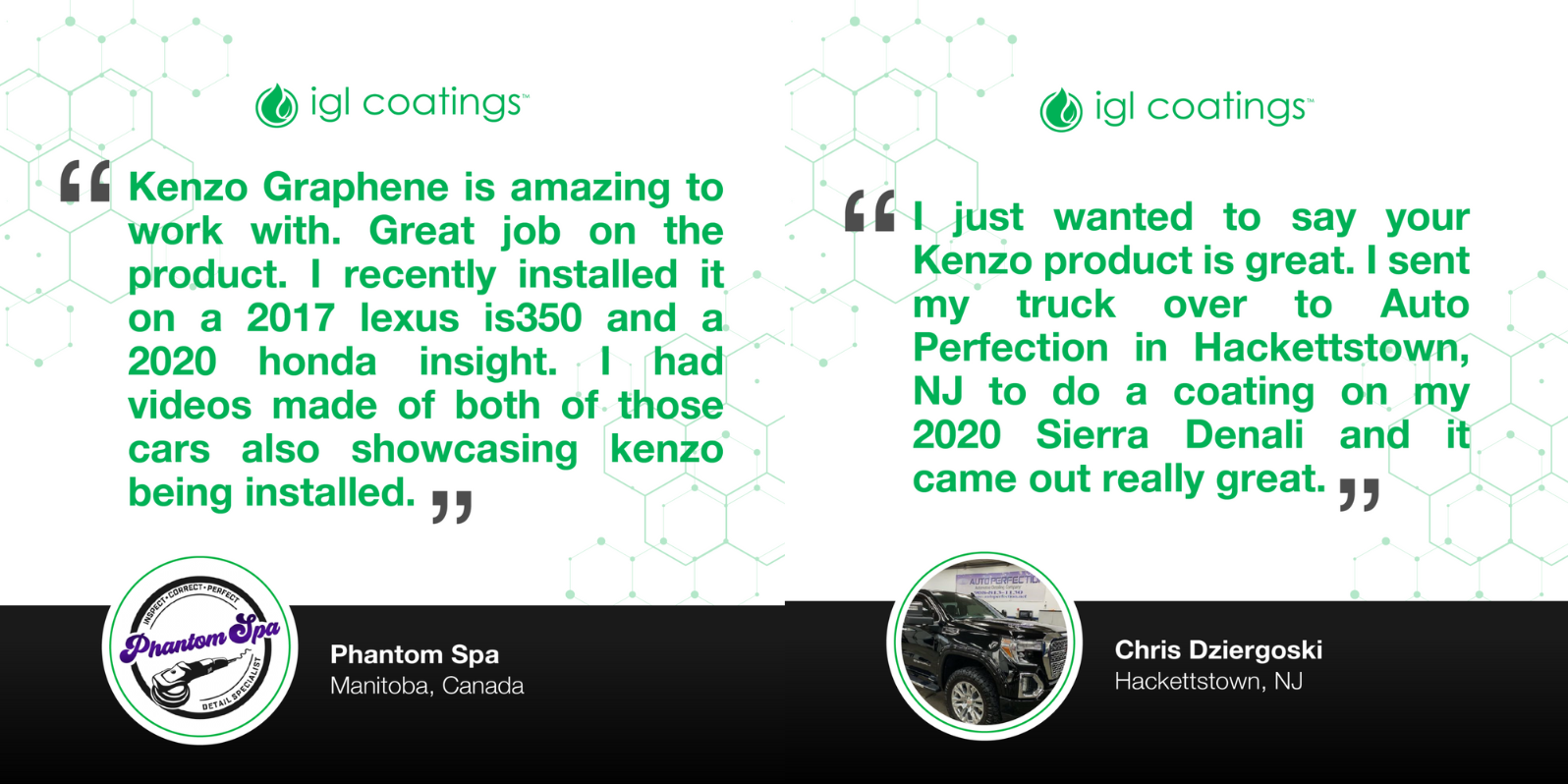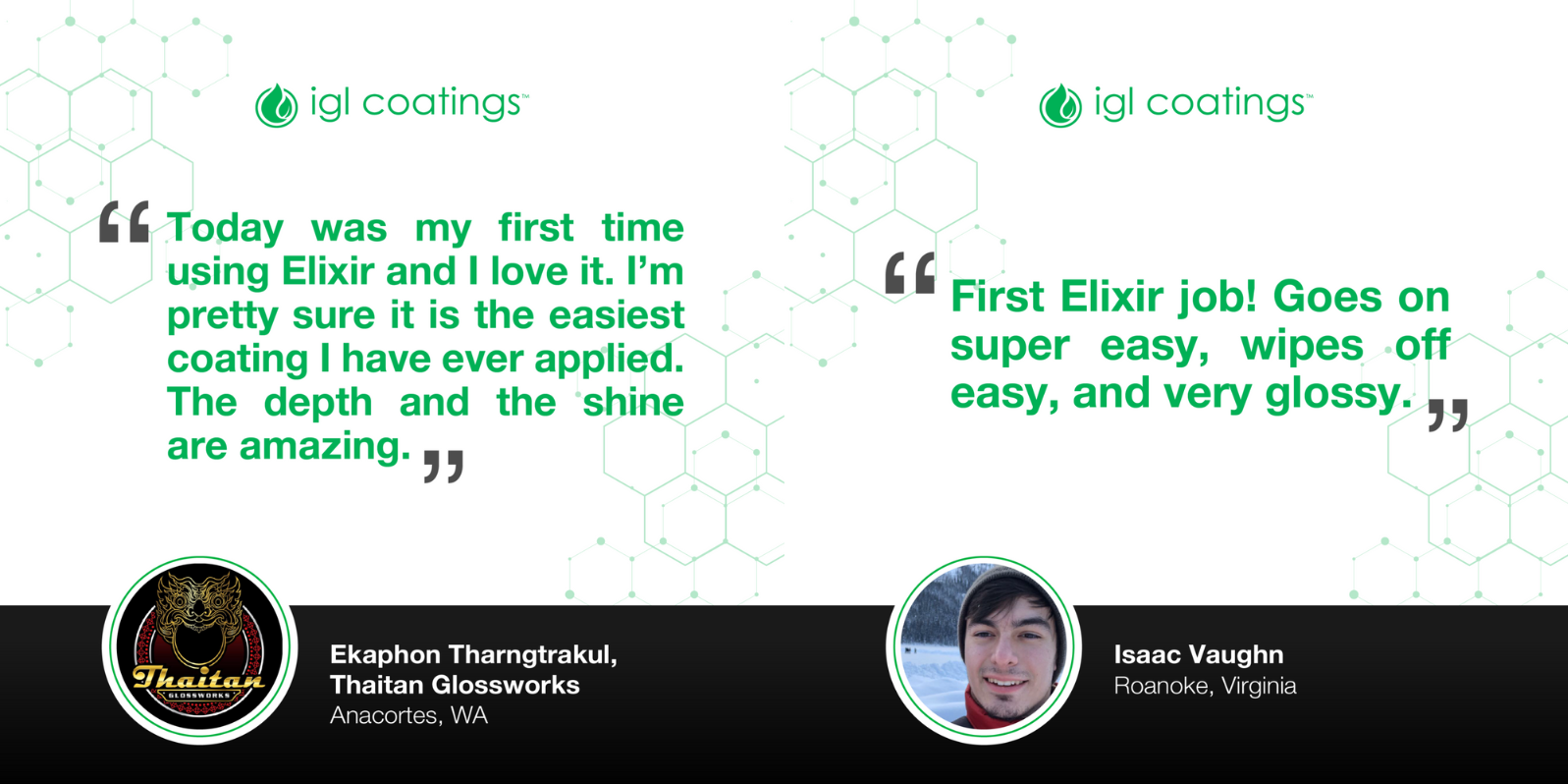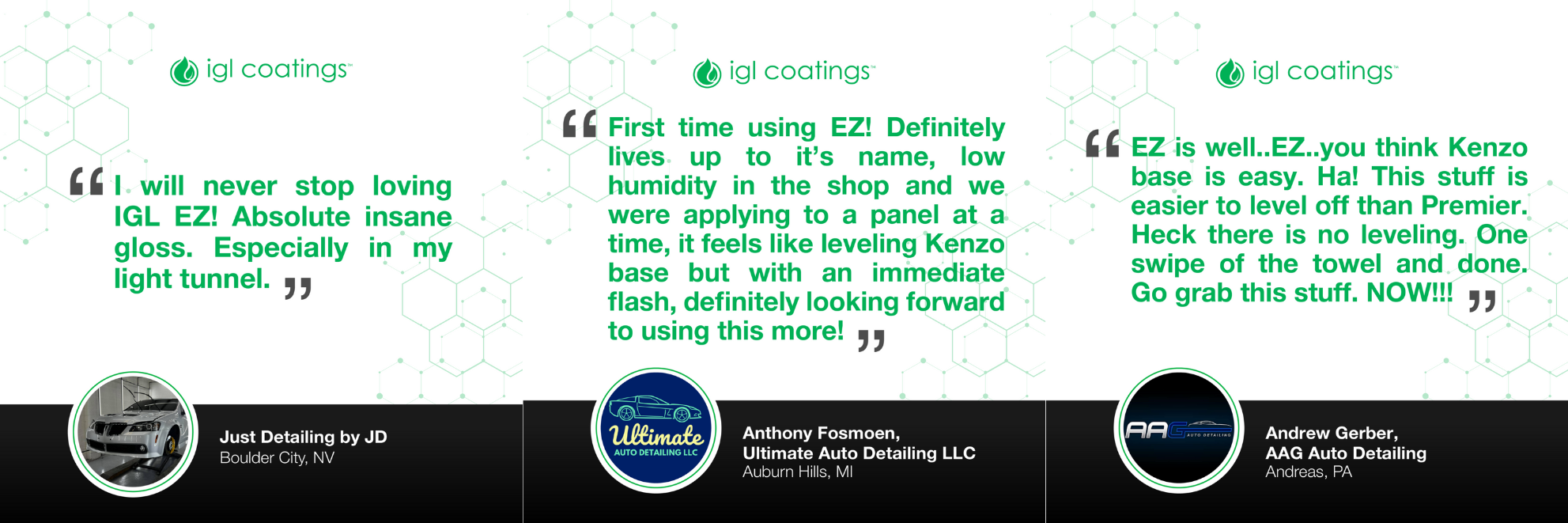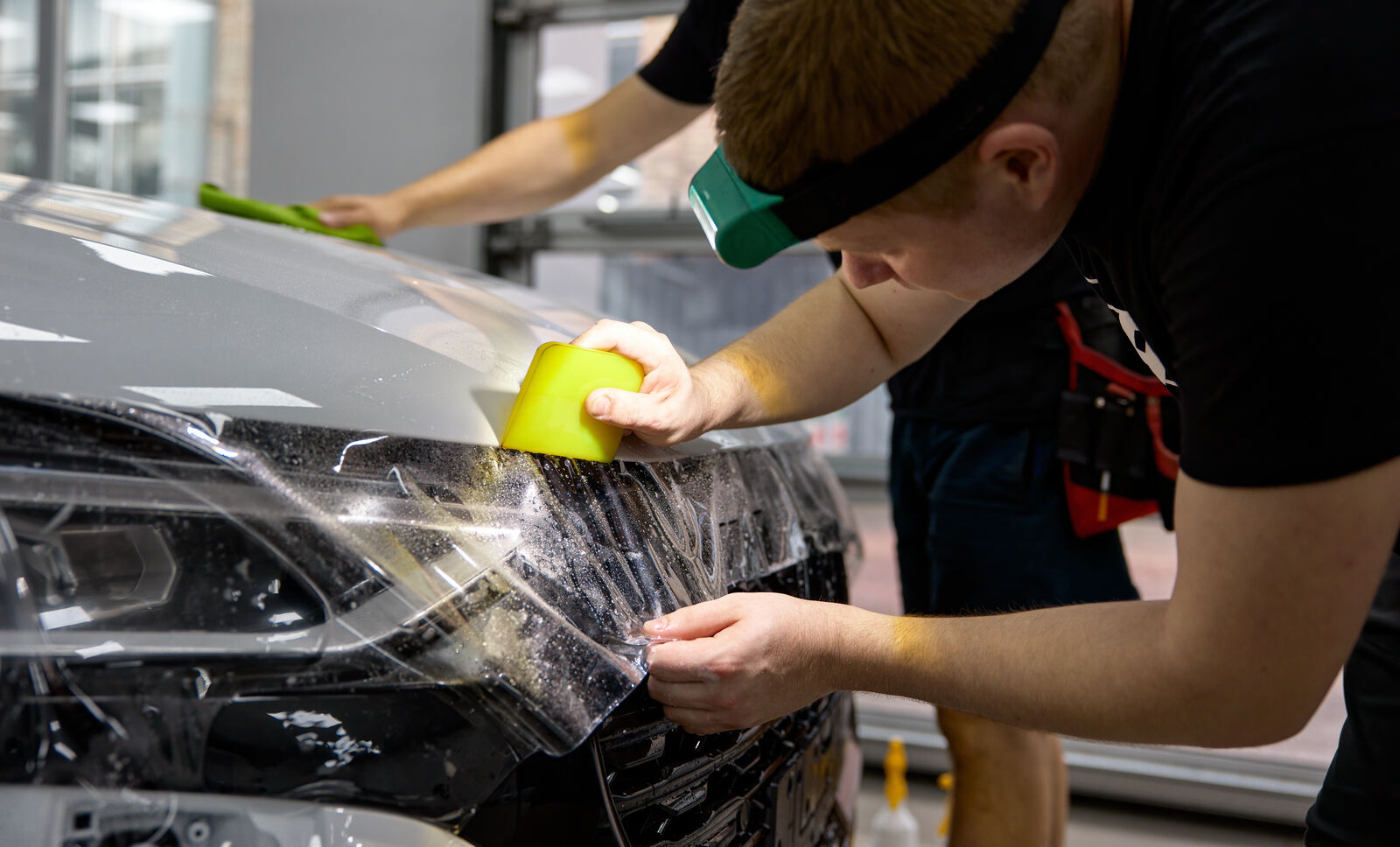Ceramic Coating vs. Paint Protection Film (PPF): Choosing the Right Shield for Your Car in US [2024 Guide]
20 September 2024
Your car’s exterior is one of its most valuable assets, and keeping it in pristine condition requires the right protection. Two popular methods for car paint protection are Ceramic Coating and Paint Protection Film (PPF). Both options offer significant benefits, but they serve different purposes. So, how do you choose the right car paint protection solution? Let’s explore PPF vs. Ceramic Coating to help you make the best decision for your vehicle.
Summary for US Drivers
When choosing between ceramic coating and paint protection film (PPF) in the US, it largely depends on your specific needs for car protection.
Ceramic Coating is a liquid polymer applied to your vehicle’s surface, forming a durable, glossy layer that protects against environmental contaminants such as UV rays, acid rain, and bird droppings. It has hydrophobic properties, making the car easier to clean and offering a shiny finish. However, ceramic coatings do not provide physical protection against rock chips or scratches. They typically last 2-5 years, depending on maintenance(Ceramic Pro)(Car Detailing Planet).
Paint Protection Film (PPF) is a thicker, transparent urethane film that shields the car from physical damage like scratches, rock chips, and minor abrasions. PPF also has self-healing properties, meaning it can repair small scratches with heat. It provides excellent physical protection but doesn’t enhance the vehicle’s gloss as much as ceramic coating does. PPF is more expensive and requires professional installation, but it can last up to 10 years with proper care(IGL Coatings Blog)(Man Cave Colorado)(Madico, Inc.).
For the best of both worlds, many car owners combine PPF on high-impact areas like the front bumper with ceramic coating on the rest of the car, providing comprehensive protection and a glossy appearance(IGL Coatings Blog)(Car Detailing Planet).
What is Ceramic Coating for Cars?
Ceramic Coating is a liquid polymer that chemically bonds to your car’s paint, creating a durable, hydrophobic layer. This car paint protection method enhances the gloss and depth of your paint while also making it easier to clean. Water, dirt, and contaminants slide right off, keeping your vehicle looking brand new.
If you’re a science buff, check out this detailed explanation on ceramic coating for cars here.
Ceramic Coating Benefits
- Enhanced Gloss and Shine: Ceramic Coating for cars significantly improves the gloss and vibrancy of the paint, creating a deep, reflective finish.
- Hydrophobic Properties: Water and dirt bead up and roll off the surface, reducing the frequency of washes and preventing water spots.
- UV Protection: Ceramic Coating shields your paint from UV rays, preventing oxidation and fading over time.
- Chemical Resistance: Protect your car from environmental contaminants like bird droppings, tree sap, and road salts.
Ceramic Coating Cost in US and Limitations
- Cost: The ceramic coating cost varies depending on the size of your vehicle and the quality of the product. Professional application can be expensive but ensures long-lasting protection.
The cost of ceramic coating in the U.S. varies depending on factors like the size of the vehicle, the level of protection, and any additional services such as paint correction. Here’s a breakdown of the costs:
Professional Ceramic Coating: Typically ranges from $1,000 to $2,500 for most cars, with larger vehicles like SUVs and trucks costing between $1,500 and $3,000. These prices cover high-quality coatings that can last up to 5-7 years with proper maintenance(Paint Correction Guide)(Autotrader).
DIY Ceramic Coating Kits: If you prefer doing it yourself, kits are much cheaper, costing between $50 and $300, but the results depend on your skill level, and improper application can require costly corrections(Autotrader)(Paint Correction Guide).
Additional Costs: If your car’s paint needs correction (removing scratches or swirl marks) before applying the ceramic coating, this could add an extra $500 to $2,000 to the total cost(Paint Correction Guide).
- Limitations: While ceramic coating protects against minor scratches, it does not shield your vehicle from rock chips and other physical damage(Ceramic Pro).
What is Paint Protection Film (PPF)?
Paint Protection Film (PPF), also known as “clear bra”, is a transparent urethane film that serves as a physical barrier against rock chips, road debris, and scratches. PPF provides unmatched car paint protection, absorbing impacts to preserve the integrity of your vehicle’s paint.
Paint Protection Film Benefits
- Superior Physical Protection: Paint Protection Film offers exceptional protection against rock chips, road debris, and minor abrasions, making it the top choice for physical car paint protection.
- Self-Healing Properties: Minor scratches and swirl marks on some self healing PPF can disappear with heat or sunlight, ensuring a flawless look. Be warned though, that the healing can only be replicated for a finite number of times before it needs to be replaced completely. Find out more with your PPF expert before applying!
- UV and Chemical Resistance: Like ceramic coating, some PPF protects your vehicle from UV rays, oxidation, and environmental contaminants).
- Durability: Depending on the brand and how it is maintained Car paint protection film may last up to 10 years with proper maintenance, providing long-term protection. Certain unknown brands may only last up to a year causing difficulties in removals and causing paint to be removed as well during such removals.
Paint Protection Film Cost in US and Limitations
- Cost: The paint protection film cost is MUCH higher compared to a ceramic coating, largely due to the complexity of the installation process and the material itself.
The cost of Paint Protection Film (PPF) in the US can vary widely depending on several factors such as the vehicle size, the quality of the film, and the area of coverage. For partial installations, which typically cover high-impact areas like the front bumper, hood, and mirrors, prices generally range from $900 to $2,500. A full-body PPF wrap that covers the entire vehicle can cost between $2,000 and $7,000, or even more depending on customization options and the film’s quality(MD Auto Spa)(EZ Auto Spa)(AFS Houston).
Higher-end PPFs, such as those from brands like XPEL or 3M Scotchgard, tend to be more expensive but offer longer-lasting protection and better warranties. The installation process also plays a role in the cost, as professional, experienced installers who ensure a perfect application may charge higher fees, but the results typically justify the cost(MD Auto Spa)(Rayno Window Film).
PPF is an investment in maintaining the vehicle’s appearance and resale value by protecting against road debris, scratches, and environmental damage.
- Limitations: Although paint protection film is clear, visible edges and seams may be noticeable, especially on complex surfaces. Additionally, lower-quality films may yellow over time.
- Removals: This Reddit Thread shares all the nightmares for PPF removals gone wrong! Removing a ceramic coating requires a polisher and a little bit of time. Usually it doesn’t include potentially damaging your original paint. PPF may have that complexity as over time, it will crack, yellow, and become very difficult to remove. Low quality adhesion, can also cause damage to the clear coat, ripping off portions of paint!
Reddit Reviews on PPF Longevity and Removals:
One user on Reddit mentions: “Heat gun and warm water were used. However, the adhesive was so strong that whatever approach we took it chipped the paint from the plastic parts and hard adhesive residue was left on the metal parts which took a lot of effort to clean. Here is the video which I captured while work was being done on the car.”
Another User shares, “when I tried to remove it after 6 years the clear coat came along with it. I ended up repainting my car exterior due to this. So basically the item which was supposed to protect the paint ended up ruining it completely. Nowadays I stay far away from PPF no matter how reputed the manufacturer is.”
A frustrated user shares, “Over the period of time, PPF had become brittle and got converted from glossy to matt”.
PPF vs. Ceramic Coating: Which One is Right for Your Car?
When deciding between PPF vs. Ceramic Coating, the choice depends on your specific needs for car paint protection:
- Choose Ceramic Coating if your primary focus is on enhancing gloss, achieving easier maintenance, and protecting against environmental contaminants. It’s ideal for those who want their car to have a sleek, hydrophobic surface that’s easy to clean(A Nation of Moms,Ceramic Pro).
- Choose Paint Protection Film if your priority is superior physical protection against rock chips, scratches, and road debris. PPF is the preferred choice for drivers who seek long-lasting car paint protection film to guard against more severe damage(Mechanic Insights,Pureblind Wraps).
Can You Combine Ceramic Coating and Paint Protection Film?
Yes, for the best of both worlds, many car owners opt to combine Ceramic Coating and Paint Protection Film. PPF can be applied to high-impact areas such as the front bumper, hood, and mirrors, while the rest of the vehicle receives ceramic coating. This hybrid approach offers comprehensive paint protection: PPF shields the most vulnerable areas from physical damage, while ceramic coating enhances gloss and protects against environmental contaminants.
Final Thoughts on Paint Protection Film and Ceramic Coating
Both Ceramic Coating and Paint Protection Film (PPF) provide valuable car paint protection, but they cater to different needs. If you value gloss and ease of maintenance, ceramic coating for cars is a great option. If you’re concerned about physical damage like rock chips and road debris, car paint protection film is the superior choice.
Choosing the right paint protection solution will depend on your preferences and how you plan to maintain your car. No matter what you choose, regular maintenance and professional installation are key to ensuring that your vehicle stays protected and looks its best for years to come.
FAQs about Ceramic Coating and Paint Protection Film (PPF)
Is ceramic coating better than PPF?
Both Ceramic Coating and Paint Protection Film (PPF) offer excellent car paint protection, but neither is strictly “better” than the other—it depends on your needs. PPF is superior for physical protection against rock chips, road debris, and minor abrasions. Ceramic Coating, on the other hand, excels in providing a high-gloss finish, hydrophobic properties, and protection against UV rays and environmental contaminants. For optimal results, many car owners use both.
What is the difference between ceramic and paint protection?
Ceramic Coating is a liquid polymer applied to the car’s paint, creating a chemical bond that provides protection from environmental contaminants, UV rays, and oxidation. It enhances the paint’s gloss and makes the surface easier to clean. Paint Protection Film (PPF), however, is a thick, usually urethane film that physically shields the car from rock chips, scratches, and other physical damage.
Is ceramic coating better than paint?
Ceramic Coating is not a replacement for paint but a protective layer applied over your car’s existing paint. It enhances the gloss, provides UV protection, and makes cleaning easier. Unlike paint, ceramic coating offers chemical resistance and hydrophobic properties, but it does not repair or cover up existing damage like new paint would.
What is the difference between ceramic coating and film?
The key difference is that Ceramic Coating is a liquid solution that bonds chemically with your car’s paint, providing gloss and protection against environmental contaminants. Paint Protection Film (PPF) is a clear film that adheres to the paint, offering physical protection from scratches, rock chips, and other impact-related damage. PPF can also self-heal from minor scratches, while ceramic coating cannot.
What are the disadvantages of ceramic coating on a car?
While ceramic coating for cars offers many benefits, there are some disadvantages. It does not protect against physical damage such as rock chips or deep scratches, which is where PPF excels. The ceramic coating cost can be high, especially if professionally applied, and improper application may lead to streaks or uneven coverage. Additionally, regular maintenance is required to keep its hydrophobic properties intact.
What are the disadvantages of PPF coating?
PPF is more expensive than ceramic coating, mainly due to the labor-intensive installation process. It can also show visible seams or edges, especially on complex surfaces. Over time, lower-quality films may yellow, affecting the appearance of the car. PPF may not offer the high-gloss finish that ceramic coating provides, although it is excellent for protecting against physical damage.
Do you need ceramic coating after PPF?
While Paint Protection Film offers strong protection against physical damage, applying ceramic coating after PPF can enhance the overall protection. The ceramic coating will add hydrophobic properties, making the car easier to clean, and it will increase the gloss of the vehicle, enhancing its appearance.
Is paint protection film good or bad?
Paint Protection Film (PPF) is generally considered good for car paint protection, particularly for protecting against rock chips, scratches, and other physical damage. Its self-healing properties are a huge advantage. However, it can be expensive, and visible seams or edges may detract from the aesthetics of some vehicles. Also note the quality of the film applied and the difficulties and heartaches you may encounter when removing it.
Does PPF damage paint?
On a whole, Paint Protection Film (PPF) should not damage the paint if properly applied. In fact, it protects the paint from physical damage. However, if improperly installed or removed, it could potentially pull off paint, especially if the paint is not factory-grade or has been previously damaged. Therefore, it’s essential to have PPF professionally installed and removed. Nevertheless, it is always a risk during removals that the paint could be removed.
Protect and Enhance Your Car’s Finish with IGL Coatings’ Innovative Ceramic Coating Solutions!
IGL Coatings, a pioneer in sustainable and high-performance coatings, continues to set the standard in the US industry. Their latest offerings, such as the Ecocoat Elixir and Ecocoat EZ, showcase their commitment to innovation and environmental responsibility.
Ecocoat Kenzo Graphene, our signature graphene-reinforced coating, offers unparalleled durability and shine. Tested by TUV Rheinland and recognized as a leader in the industry, Ecocoat Kenzo provides a warm glow and exceptional protection, making it the ultimate choice for those seeking the best in ceramic coating technology (SEMA Show).

Ecocoat Elixir provides excellent water spot resistance, improved hydrophobic properties, and enhanced slickness, making it a top choice for both professional detailers and DIY enthusiasts. With a reduced curing time of just two hours, it’s perfect for those who need quick yet effective results.

Ecocoat EZ is designed for easy application, making it ideal for beginners. This one-layer, all-surface coating offers up to a year of durability, combining ease of use with outstanding protection and shine.

For more information about IGL Coatings and to explore their full range of products, visit IGL Coatings and join the community of automotive enthusiasts dedicated to achieving unparalleled shine and protection.
About IGL Coatings
IGL Coatings has rapidly ascended to become a leading name in the automotive detailing industry since our establishment in 2015. Originating from Malaysia, we have achieved international acclaim for our innovative surface protection solutions, which emphasize sustainability and advanced technology. IGL Coatings is renowned for our commitment to research and development, creating high-performance coatings that offer exceptional durability and enhanced aesthetics.
Our global reach extends to over 50 countries, where we support a network of more than 5,000 micro-entrepreneurs. This global presence is bolstered by strategic partnerships and a robust distribution network, which has facilitated our recognition as the highest growth manufacturer in Malaysia and one of the top 500 high-growth companies in the Asia Pacific.
IGL Coatings: Industry Recognition
Our dedication to quality and innovation has also been recognized through various awards, including the prestigious SEMA Media Award and the International Detailing Association’s Detail Supplier of the Year award.
These accolades reflect our commitment to excellence and our role as a leader in the industry. Our continuous innovation and adherence to high standards have made us a trusted name among professionals and enthusiasts worldwide.
Follow us on social media:
Facebook | LinkedIn | Instagram | Twitter | YouTube | TikTok


